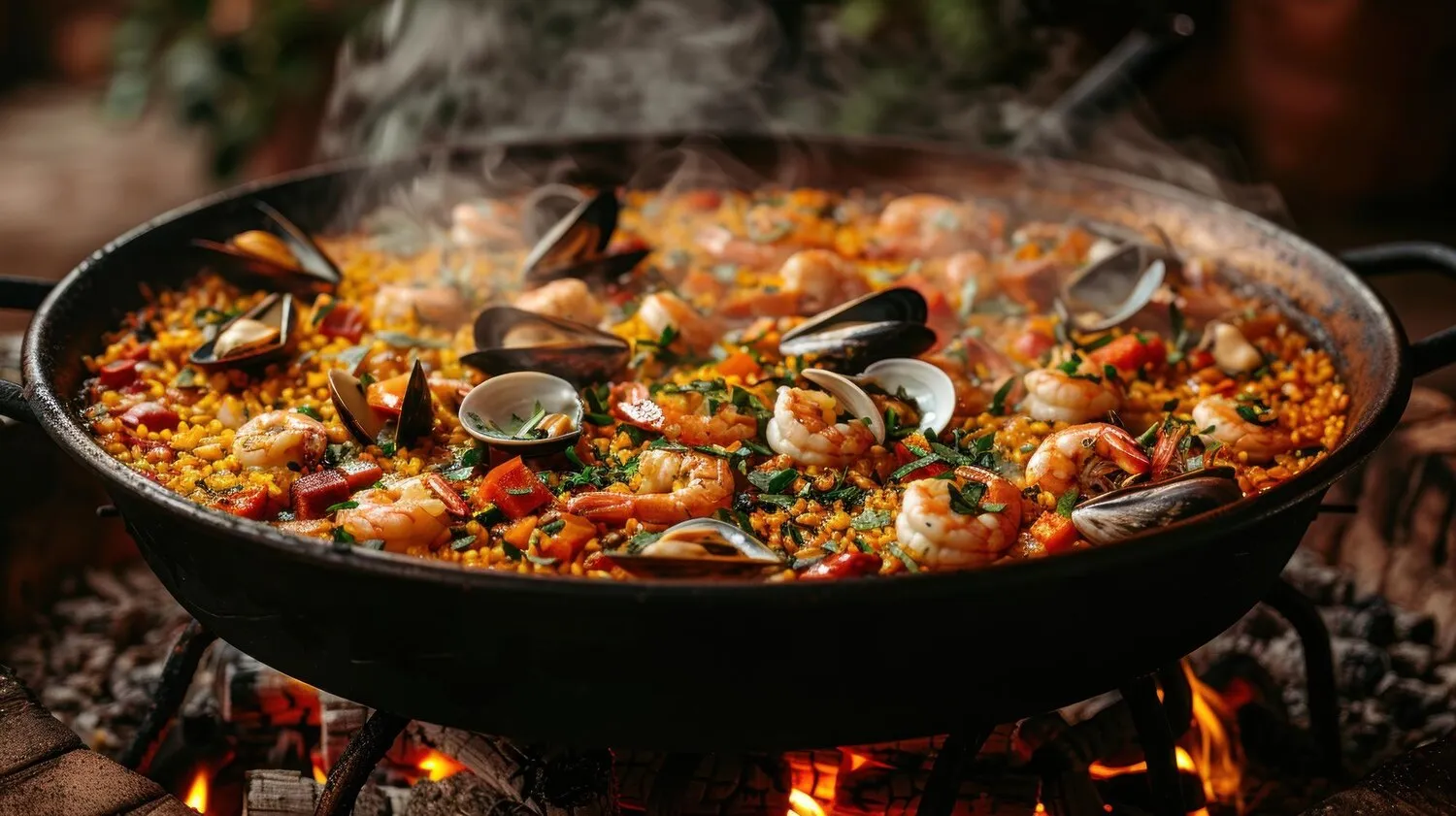
Paella
A classic Spanish rice dish with seafood, chicken, and vegetables.
Nutrition Facts
* The % Daily Value (DV) tells you how much a nutrient in a serving of food contributes to a daily diet. 2,000 calories a day is used for general nutrition advice.
Quinta De Olivares
Paella's roots lie in the farmlands of Valencia, Spain, dating back to the 15th century. Originally a peasant dish, it was cooked over an open fire in the fields, using whatever ingredients were available. The Moors, who introduced rice cultivation to Spain, heavily influenced its development. As Valencia grew, so did paella, incorporating ingredients from the coast like seafood.
Paella is more than just a dish in Spain; it's a symbol of community, celebration, and tradition.
Family Gatherings
Paella is often prepared and enjoyed during family gatherings, fiestas, and special occasions, fostering a sense of togetherness and shared experience.
Regional Variations
Different regions of Spain have their own unique variations of paella, reflecting local ingredients and culinary traditions. Coastal regions emphasize seafood, while inland areas may feature meats like rabbit or snails.
Sunday Ritual
In many Spanish households, particularly in Valencia, paella is a traditional Sunday meal, enjoyed with family and friends.
Paella boasts a complex flavor profile, a result of the saffron-infused rice combined with the distinct tastes of seafood, meats, and vegetables.
The saffron imparts a subtle floral and earthy note, contributing to the dish's vibrant yellow color. Seafood such as mussels, clams, shrimp, and calamari provide a briny, oceanic taste, while chicken and/or rabbit add a savory, meaty dimension. Vegetables like tomatoes, peppers, and peas contribute sweetness and freshness. The socarrat, the crispy rice at the bottom of the pan, offers a delightful nutty flavor and textural contrast.
Use the Right Rice
Short-grain rice varieties like Bomba or Calasparra are ideal for paella, as they absorb liquid well and maintain their shape during cooking. Avoid long-grain rice, which tends to become mushy.
Create a Socarrat
The socarrat, the crispy layer of rice at the bottom of the pan, is a prized element of paella. To achieve it, increase the heat slightly towards the end of cooking and listen for a crackling sound. Be careful not to burn the rice.
Don't Stir Too Much
Avoid stirring the rice too frequently, as this can release starch and result in a sticky paella. Allow the rice to cook undisturbed, absorbing the flavorful broth.
Use Good Quality Ingredients
The flavor of paella relies heavily on the quality of its ingredients. Use fresh seafood, flavorful meats, and high-quality saffron for the best results.
Explore additional Paella dishes and restaurants
Explore PaellaDiscover top dining spots and culinary experiences in Joinville.
Explore JoinvilleLearn more about the food culture, restaurant scene, and culinary heritage of Brazil.
Explore Brazil